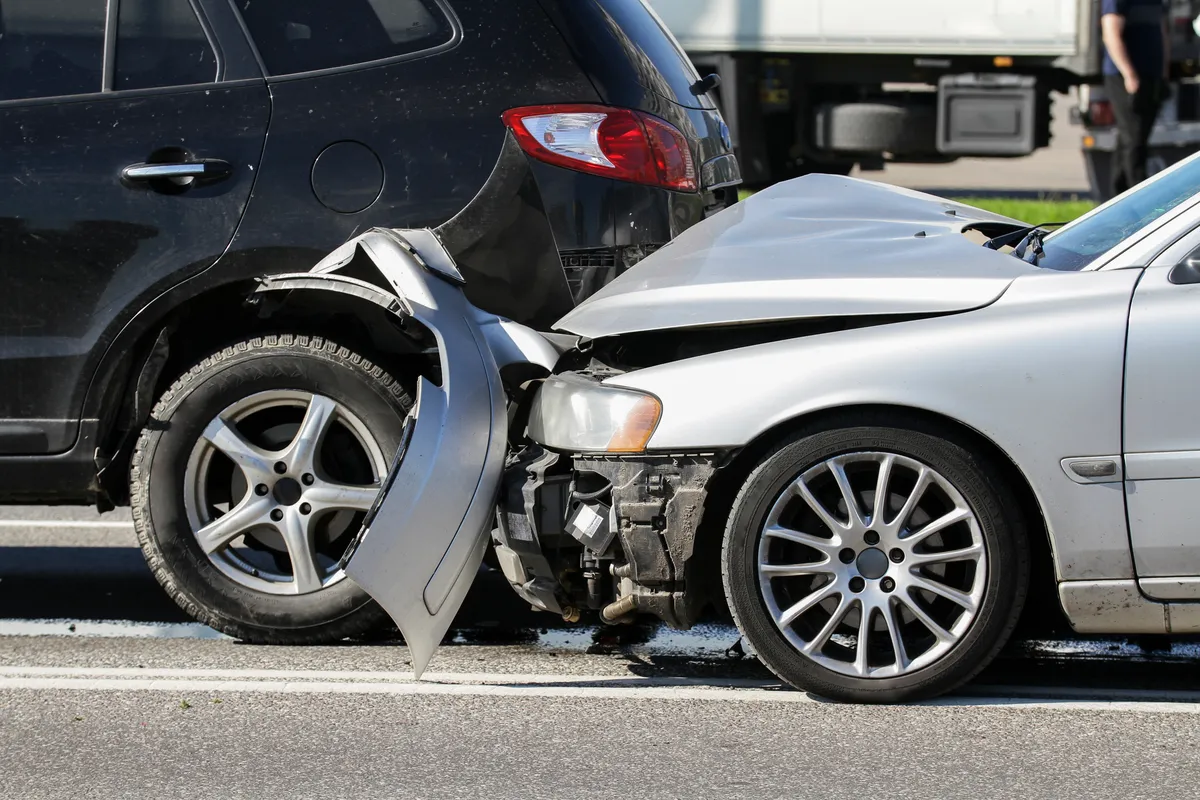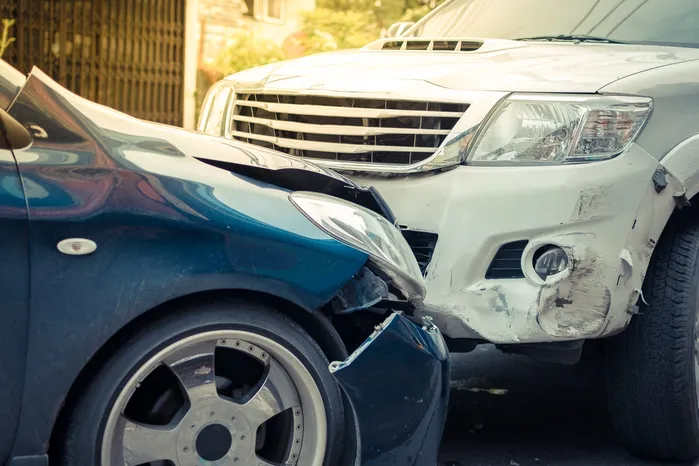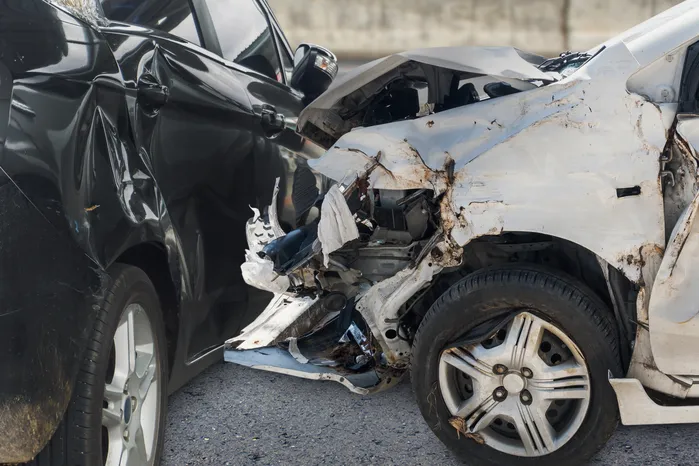10 min read time
Table of Contents

Rear-end accidents account for about 29 percent of all motor vehicle accidents, making them the most common type of crash on our roads.
In this article, you'll learn why rear-end accidents are so common, the injuries associated with rear-end crashes, and the legal options you can take if you have been rear-ended.
What Is a Rear End Collision
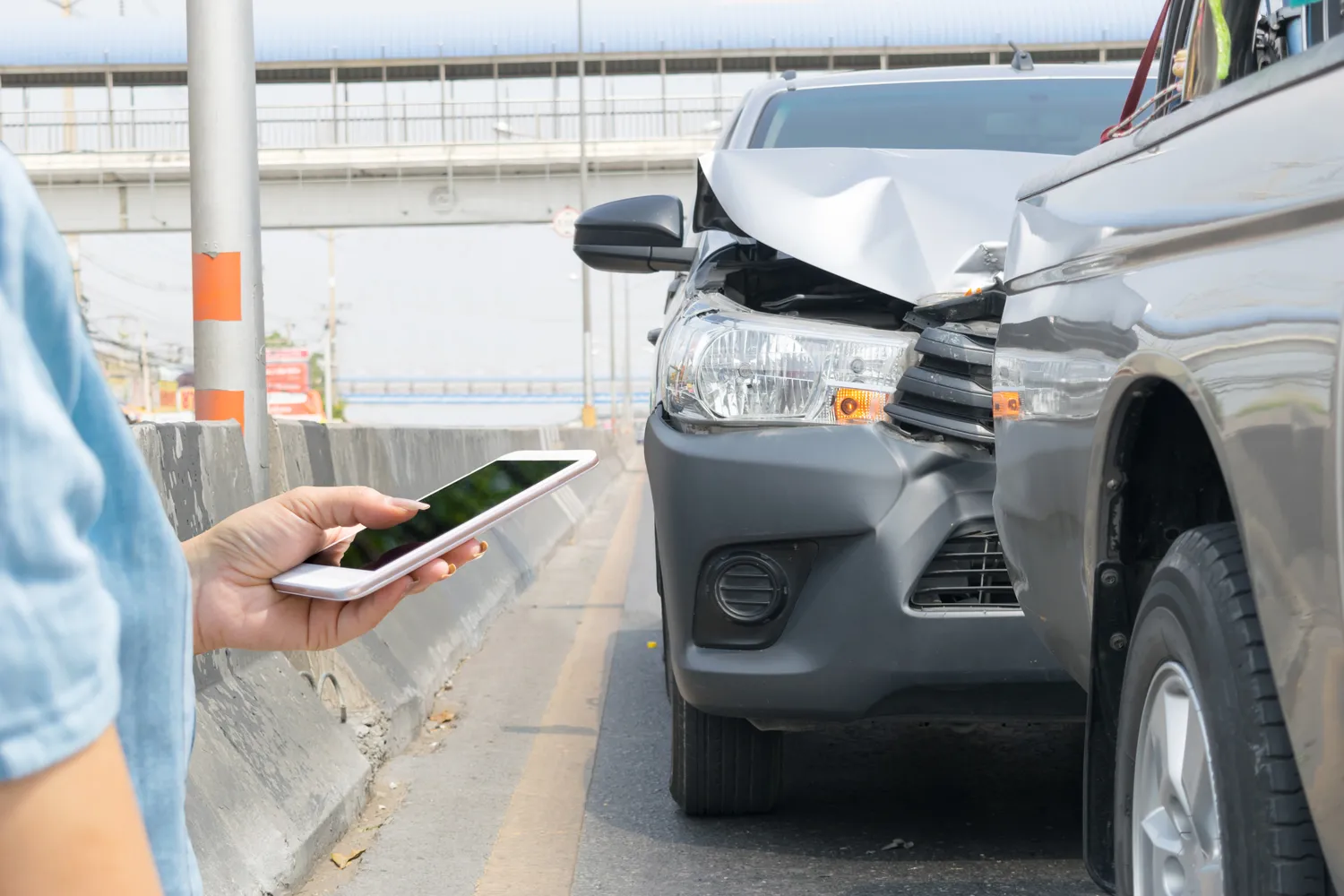
A rear-end collision is one of the most common traffic accidents and occurs when the front of one vehicle crashes into the rear of another.
Rear-end car accidents commonly occur in stop-and-go traffic, highly congested roads, and highways and can result in minor to severe injuries.
Common Causes of Read-End Accidents
Understanding the common causes of rear-end accidents is crucial for preventing future accidents. Common causes of rear-end collisions include:
Distracted Driving: Distracted driving is a leading cause of rear-end accidents. Drivers on their phones, eating, or adjusting the radio may miss vital seconds they would need to stop their vehicle.
Tailgating: Commonly seen in road rage, tailgating occurs when the rear driver follows the lead driver too closely, increasing the likelihood of a rear-end accident.
Speeding: Drivers who disregard speed limits will have less time to react and stop for the leading vehicle, resulting in a rear-end accident.
Sudden Stops: If the front vehicle suddenly stops or is brake-checking, the rear driver may not have time to stop and rear-end the lead car.
Weather Conditions: Some drivers underestimate what poor weather conditions can do to stopping distance and may not maintain a safe following distance or brake early on wet or icy roads.
Mechanical Failure: Mechanical malfunctions such as brake failures, tire blowouts, or steering issues in the rear vehicle or the following vehicle can result in a rear-end collision.
Heavy Traffic: In congested traffic, some drivers may not anticipate sudden slowdowns or stops, resulting in a rear-end car accident.
By being informed on the common causes of rear-end car accidents, you can reduce the risk of car crashes for everyone by practicing safe driving behaviors.
Injuries Related to Read-End Car Accidents

A rear-end car accident can result in serious injuries that can be costly to someone's physical, mental, and financial health. Common rear-end accident injuries are:
Whiplash
Many rear-end accidents result in whiplash, which is an injury that is caused by the head and neck suddenly being jolted forward and backward, causing strain on the cervical spine.
Whiplash can result in neck pain, stiffness, headaches, and even chronic pain.
Spinal Cord Injuries
The impact of a rear-end collision can cause various spine injuries, such as herniated discs, spinal fractures, and muscle strains.
Spinal injuries can lead to chronic pain, limited mobility, and partial or complete paralysis.
Head Injuries
Head trauma, which can range from mild concussions to severe traumatic brain injuries, can occur if an occupant's head strikes the steering wheel, dashboard, or any other hard object during a car accident.
Head and brain injuries can cause long-lasting cognitive, emotional, and physical injuries.
Soft Tissue Injuries
Rear-end car accidents can cause a multitude of soft tissue injuries, such as contusions, sprains, strains, and stress fractures.
Broken Bones
At high speeds, the force of a rear-end accident can break or fracture bones, resulting in pain, limited mobility, swelling, and tenderness.
How T Prevent a Read-End Crash
Some rear-end collisions may be completely unavoidable. However, below are a few things you can do as the rear driver or lead driver to avoid an accident.
Maintain a Safe Following Distance
Maintaining a safe following distance is one of the best preventive measures to avoid a rear-end collision.
The key to maintaining a safe following distance is:
Three-Second Rule: Maintain at least three seconds of driving time between your vehicle and the lead vehicle, and increase the distance in adverse weather or heavy traffic.
Avoid Distractions
Distracted driving is a sure way to get into a rear-end collision and be the at-fault driver.
It's important to refrain from using your phone, eating, adjusting the radio, or doing anything else while driving.
Anticipate Sudden Traffic Changes
Don't get too comfortable while driving, and always drive defensively. To anticipate traffic changes, look ahead and scan the road for hazards, stopped traffic, or pedestrians.
Maintain Your Vehicle
Ensure that your vehicle is adequately maintained by:
Checking Brakes: Periodically check your brakes and replace worn-out pads or rotors to ensure maximum brake functionality.
Regular Tire Checks: Keep your tires properly inflated and replace worn-out ones.
Maintain Lights and Signals: Ensure your brake lights and signals work by turning on your vehicle and inspecting the lights.
Adapt to Adverse Weather
Drive with more caution in adverse weather conditions by:
Slowing down
Increasing following distance
Using headlights
Liability and Fault in Rear-End Collisions
Determining fault in a rear-end collision is vital to resolving the insurance claim and obtaining compensation. However, determining fault may not be as straightforward as some may think.
Why the Rear Vehicle Is Usually Presumed to Be at Fault
In most rear-end collisions, the driver who rear-ends the other vehicle is typically presumed to be at fault in a rear-end accident.
This presumption is based on the principle that the rear vehicle should maintain a safe following distance and be able to stop the vehicle to avoid a collision.
Situations Where the Rear Vehicle Is Not at Fault
Even though the presumption is that the rear driver is at fault, there are situations where the lead vehicle is at fault, such as:
Sudden stops
Reversing
Broken brake lights
Road rage
Mechanical errors
Comparative Fault
States with comparative negligence rules, like Nevada, allow both parties to be at fault in a rear-end collision.
It's important to understand that under comparative negligence rules, compensation will be reduced based on the percentage a driver is found to be at.
For example, if a driver is found to be 30% at fault for the rear-end crash, their final settlement amount will be reduced by 30%.
Determining Fault in Rear-End Accidents
Determining fault in a rear-end crash will involve building evidence against the other driver and exposing their fault in the rear-end collision. Doing this will usually include:
Reviewing Police Reports: The police report filed by the on-scene officer will need to be examined to determine the officer's opinion on who was at fault in the rear-end collision and any citations they may have issued.
Interview Witnesses: Interviews will conducted on witnesses as their statements can provide unique insights into the car accident.
Analyze Camera Footage: Video recordings from dashcams or traffic cameras can be crucial to determining fault in a rear-end collision, as they provide a clear and unbiased view of the car accident.
Noting Physical Evidence: Physical evidence such as skid marks, point of impact, and vehicle damage can be used to reconstruct the accident and lay out the events that led to it.
Expert Analysis: In complex rear-end collisions, an accident reconstruction expert may be called in to analyze the evidence and provide an expert opinion on the accident.
One of the most critical steps to ensuring that the other driver is held 100% responsible for the accident is to enlist help from an experienced car accident attorney in your area.
What Damages Can I Seek After a Rear-End Accident
Following a rear-end collision, you can file a car accident claim and seek damages for:
Medical Expenses: Medical costs, both past and future, can be compensated for in the claim.
Lost Wages: Serious injuries may result in you missing work or working at a reduced capacity, causing lost income. However, past and future lost income can be sought for in a claim.
Property Damage: The costs of repairing or replacing your vehicle or personal belongings can be compensated.
Pain and Suffering: You can seek compensation for the physical and emotional pain caused by the accident.
Loss of Consortium: If the accident damages your relationship with your spouse, you may seek compensation for loss of consortium.
Emotional Distress: Psychological injuries such as anxiety and depression can be sought for in a claim.
When seeking compensation from the insurance company, it's vital to understand that they are not your friend and will work to minimize the value of your claim.
Steps to Take After a Rear-End Accident
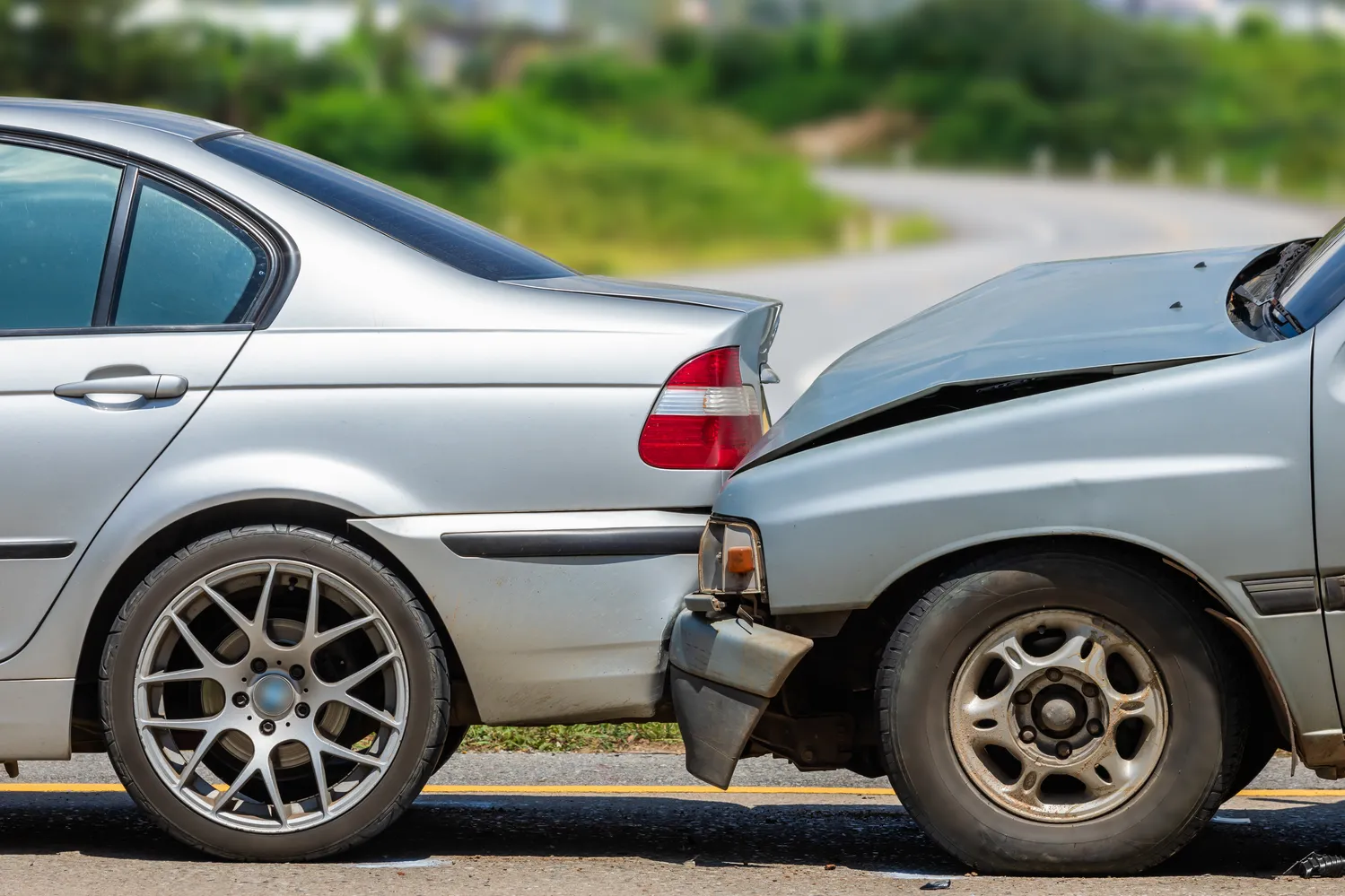
Being rear-ended can be a stressful experience that can result in severe injuries and damages, which can be worse if you don't take the proper steps.
Essential steps to take after a rear-end collision are:
Check for Injuries: Check if you or your passenger suffered injuries in the crash, and if so, immediately contact medical services.
Call the Police: Even in a minor rear-end collision, you should contact the police and request an officer be on the scene.
Document the Scene: At the accident scene, capture detailed photos of all vehicles involved, visible damage, skid marks, and the surrounding environment.
Collect Contact Information: Get the contact information of all the drivers involved in the accident and obtain any witness's contact information.
Seek Medical Attention: Some injuries may not manifest symptoms immediately, so it's essential to seek immediate medical care immediately after the accident.
Consult with an Attorney: Schedule a free consultation with a car accident lawyer in your area and learn vital insights on how you may seek compensation.
Rear-End Collision Statistics
Rear-end collisions are the most common type of car accident, and according to the National Highway Traffic Safety Administration's (NHTSA) study, rear-end collisions account for 29% of all traffic accidents.
In addition, statistics provided by the Insurance Information Institute outline that rear-end collisions contribute to over 7% of all auto accident fatalities and nearly 20% of traffic fatalities involving two vehicles.
Talk to a Nevada Car Accident Attorney
If you were in a Las Vegas rear-end collision accident and looking to receive maximum financial compensation from the other driver's insurance company, contact the experienced car accident attorneys at the Rodney Okano Car Accident Lawyer law firm.
With 20+ years of experience, millions recovered, and a 5-star client rating, we will win your case and obtain the compensation you're entitled to.
Schedule a free consultation with a car accident lawyer today by calling (702) 566-3600.
Frequently Asked Questions
Obtain the Compensation You're Entitled To
Contact Us Today
Rodney Okano Car Accident Lawyer is a Las Vegas personal injury law firm with over 20 years of experience helping clients obtain maximum compensation following injuries from accidents such as car crashes, worksite injuries, and slips and falls. Over those years, The Rodney Okano Car Accident Lawyer Law Firm has become an experienced law firm that can ensure exceptional results for any of its clients.

